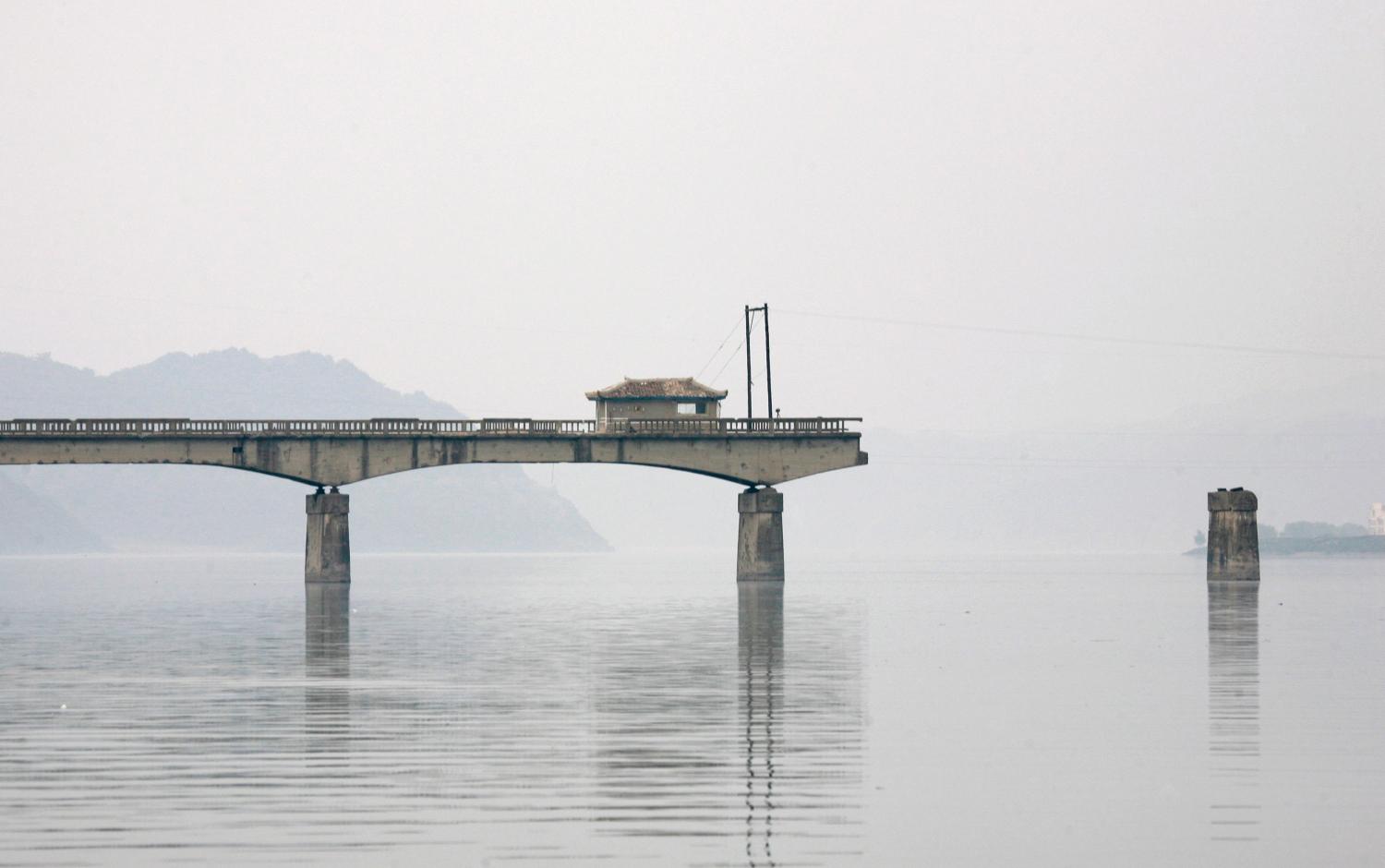Summary
For two decades, the United States has sought to end North Korea’s nuclear weapons program. Occasional success in freezing elements of that program, together with pledges by Pyongyang to end it, inspired hope that denuclearization could actually be achieved. Hope also grew from the belief that there existed a collection of incentives, including diplomatic normalization, security guarantees, and food assistance, which would convince Pyongyang to abandon its nuclear ambitions. These hopes have been dashed. U.S. policy has failed to achieve its objective.
Important lessons have been learned from years of negotiating with Pyongyang. Among them is that North Korea probably was never serious about ending its nuclear and missile programs. We have learned that even the most robust package of inducements was insufficient to stop Pyongyang’s nuclear pursuit. North Korea has shown itself willing to endure tough sanctions to preserve its nuclear and missile assets. We have seen nuclear weapons and ballistic missiles become twin pillars of the regime’s survival plan. And Pyongyang has enshrined its nuclear status in its constitution and declared that it will not give up its nuclear weapons under any circumstances.
Today, North Korea is advancing its nuclear and ballistic missile programs, which it calls its “strategic deterrent.” Pyongyang knows that the international community will never recognize it as a nuclear weapons state, but believes it can secure the world’s grudging acceptance of its nuclear status.
Meanwhile, China hopes to reconvene the Six-Party denuclearization talks that collapsed in 2008. Experience tells us that such negotiations, if they were to resume, will not end Pyongyang’s determined pursuit of nuclear weapons. Occasional North Korean declarations claiming interest in denuclearization notwithstanding, Pyongyang is embarked on the development of a nuclear strike capability that will soon threaten Northeast Asia, including U.S. allies and American bases in the region.
Faced with these facts, U.S. policy must change to meet the stark new reality of a North Korea that possesses nuclear weapons and has threatened to use them, including against the United States.
The United States should recognize that the current North Korean regime has no intention to denuclearize. Nevertheless, denuclearization should remain the goal of U.S. policy, and the United States should remain open to negotiations if talks offer a serious prospect of achieving that goal. We should also recognize that only direct dialogue with North Korea’s leaders has any chance of changing DPRK policy – although the odds are slim that even this will succeed.
While leaving the door open to credible negotiations, Washington should expand and intensify current sanctions, thereby greatly raising the economic and political cost to Pyongyang of its nuclear weapons program. The United States should adopt stronger deterrence and counter-proliferation measures and impress on North Korea that its nuclear ambitions will not only prevent the regime from achieving its economic development goals, but could lead to instability. In short, U.S. policy should present North Korea with a stark choice between nuclear weapons and economic survival.
We must understand and accept that the problem we face is the nature of the North Korean regime itself. Intensifying economic pressure, highlighting the regime’s dismal human rights record, and increasing the flow of information to the North Korean people could hasten the transformation of the regime’s thinking. So, too, could targeted sanctions and other measures designed to shake the confidence of the elites on which the regime depends. But all of these measures could also contribute to the regime’s demise, even if the goal of U.S. policy is not regime change. Accordingly, Washington should intensify discussions with Seoul and Tokyo (and Beijing, if it is willing) on how to respond to the collapse of the North Korean regime.
U.S. policymakers should continue to urge China to convince Pyongyang to give up its nuclear program. China has grown tired of North Korea’s provocations and brinksmanship, but Beijing’s goals and priorities for North Korea are not identical to ours. Beijing fears instability more than it does Pyongyang’s nuclear weapons, and China’s go-slow approach to denuclearization would leave the DPRK’s nuclear program, and its growing threat, in place for a long time to come. China must be convinced that North Korea’s continued possession of nuclear weapons risks creating the chaos that the PRC fears and that it detracts from China’s own security. Encouraging a greater sense of urgency in China’s assessment of North Korea should be a major focus of U.S. policy.
Past evolutions of U.S. policy used a variety of approaches to achieve the U.S. denuclearization goal, all without success. To preserve peace and stability in Northeast Asia, U.S. policy must now evolve again – this time to meet an ominous new challenge. The cost of another failure will be steep.
Introduction
For almost two decades since the conclusion of the U.S.-DPRK Agreed Framework in 1994, U.S. policy towards North Korea has had a consistent purpose and a single, overarching goal: elimination of North Korea’s nuclear weapons program. Tactics have varied, leadership has changed, enthusiasm for direct dialogue with Pyongyang has waxed and waned, and the ideological underpinnings of U.S. policy have taken sharp turns. But each American administration has sought the same goal: denuclearization.
Yet each U.S. administration has found this goal elusive. No less elusive has been the collateral aim of ending North Korea’s development of medium- and long-range ballistic missiles. Over the years, the best that several U.S. administrations have been able to achieve has been a temporary freeze of the North’s production of fissile material for nuclear weapons, destruction or disablement of replaceable elements of Pyongyang’s nuclear infrastructure, and a temporary moratorium on missile testing. The United States has also elicited North Korean promises, ultimately unfulfilled, to do more, including end its nuclear weapons program forever.
Through various means, the United States has sought to hold North Korea to its denuclearization commitments. These efforts, like U.S. policy, have failed. As a result, the United States today faces a DPRK that has become a de facto nuclear weapons state and has vowed never to give up its nuclear weapons and missile capabilities.
It is not clear whether a new approach could be adopted that would be any more successful than previous efforts, but the threat posed by North Korea’s growing nuclear and missile capabilities requires that further efforts be made. Before describing the nature of the nuclear and missile challenges the United States and the international community face, and prior to describing what a new approach to dealing with North Korea might look like, it is worth reviewing briefly the record of efforts that have sought to avoid the situation we confront today.



